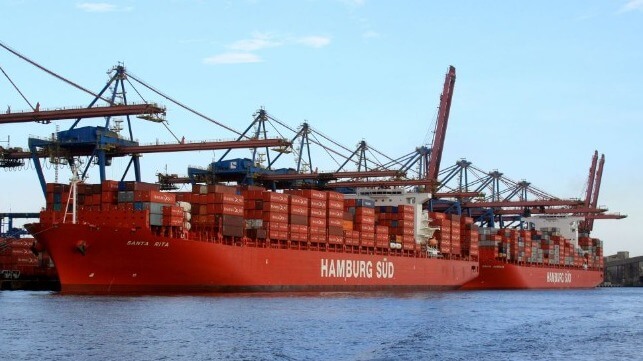Xeneta Highlights Best/Worst Carriers for Environmental Performance

The shipping industry is working to come to grips with the IMO’s Carbon Intensity Index (CII) and its potential impact on the operation of individual ships in the future as shippers seek to understand and reduce their role in carbon emissions. In an age of ever-greater environmental scrutiny, global shippers are looking for new data and to that end, Xeneta released its first summary analysis identifying the best and worst performance for one of 13 major shipping routes.
The market intelligence platform is using data from the main Far East to South America East Coast container corridor to highlight the potential impact of the CII. They are drawing attention by highlighting what it calculates to be the “industry’s best and worst environmental performers across the world’s 13 leading shipping trades.”
“Environmental performance has never been more important, both from a ‘green’ and a commercial perspective, with shippers, regulators, financiers, and other stakeholders paying close attention,” says Peter Sand, Xeneta Chief Analyst. He said the scores of individual carriers were “very mixed” with clear winners and others that would benefit from doubling down on their efforts.”
Xeneta’s analysis and data reveal the impact of different initiatives such as slow steaming as well as the size of the vessel and load factor on the scores. With the indexing just emerging in the market, Xeneta notes that it so far appears that “green performance doesn’t necessarily come with a premium price tag.”
The route to the East Coast of South America currently has the highest score of all the five major corridors out of the Fat East explains Xeneta. According to this latest analysis, the CO2 emitted per ton of cargo from the Far East to the East Coast of South America rose by 6.3 percent (quarter-on-quarter) in Q4 2022. “This leaves the trade with a CEI of 96.6, its highest tally since Q3 2021,” says Xeneta.
Based on their calculations, Hamburg Süd registered the lowest score at 76.2, meaning a ton of cargo sailing on a ship operated by Hamburg Süd emitted over 20 percent less CO2 than an average ton on this trade. Xeneta says this is due to Hamburg Süd’s sailing of “relatively slow steaming,” larger-than-average ships on this trade. Other “star performers” according to Xeneta were ONE, scoring 82.2, and Hapag Lloyd, registering 84.3. “Looking at historical figures, Hapag Lloyd actually emerges as the most carbon-efficient carrier on this trade in the past five years.,” noted Sand.
“Unfortunately for them, the CEI data shows that Evergreen was the worst performer amongst the top six carriers over the quarter,” said Sand, adding that the Taiwanese group logged a score of 109.7. “Somewhat counterintuitively, Evergreen actually had the highest filling factor on the trade – whereas Hamburg Süd’s was lower than average – however, its smaller, less carbon efficient vessels took a toll on the overall score. In addition, their ships sailed much faster, with speeds of 8.9 percent above the trade lane average.”
Based on Q4 data, Xeneta however reports that environmental performance on this route appears not to have yet translated into an economic advantage. Hapag Lloyd’s average rates were lower than average on the spot market, while on the long-term contract market, Hamburg Süd charged less than the market average when considering all valid long-term contracts. Evergreen, on the other hand, was more expensive on the long-term market but offered savings on the spot market compared to the industry average.
A broad range of companies is beginning to offer new analysis tools for measuring the performance of carriers. Xeneta says it will now be announcing the industry’s “heroes and villains” for each trade in the weeks and months to come while also adding more lanes to the Carbon Emissions Index (CEI), a tool from Xeneta and Marine Benchmark.
